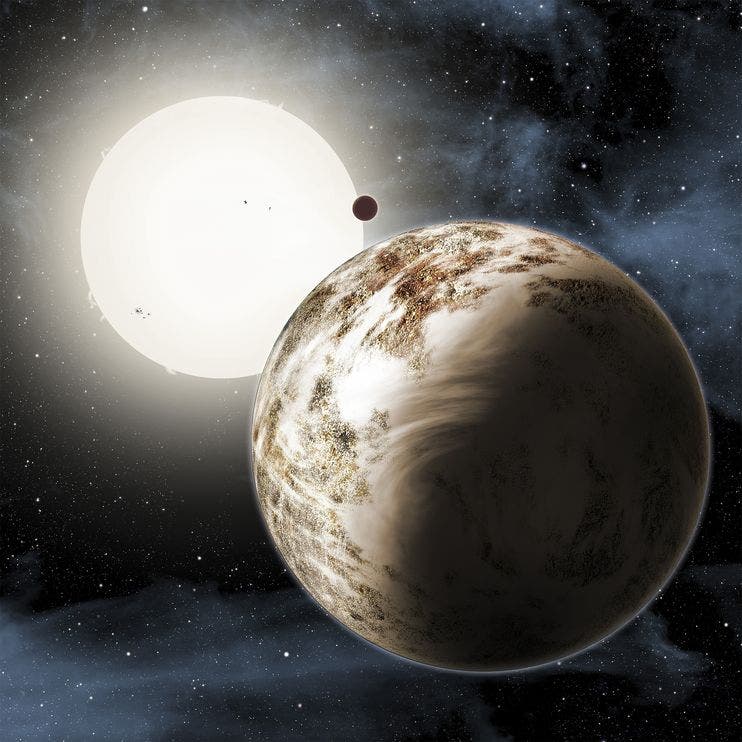A rocky world weighing 17 more than the Earth was discovered, and because it’s not only way much bigger than the previously discovered ‘super-Earths’, but also all solids, the scientists called it ‘mega-Earth’. Until this recent discovery, scientists believed that a world of such dimensions would be physically impossible to form, because of the thickness that would absorb the hydrogen gas as it grew and become a Jupiter-like gas giant.

Xavier Dumusque, the Harvard-Smithsonian Center for Astrophysics (CfA) representative, who led the data analysis and made the discovery, declared that they were very surprised to have identified such a formation. Kepler-10c was previously known to have a diameter of approximately 18,000 miles (2.3 times bigger than the Earth), which would have placed the planet into the mini-Neptunes category, characterized by thick gaseous envelopes.
The newly discovered mega-Earth circles a sun-like star every 45 days, according to the researchers. Its location is approximately 560 light-years from the Earth, in the Draco constellation. A 3-Earth-mass ‘lava world’, Kepler-10b is also contained by the solar system, whose main characteristic is the uncommonly fast 20-hour orbit. While it’s hard for the scientific world to explain the formation of such large, rocky planet, the latest observational studies suggest that’s highly possible for other planets to have similar characteristics. Accordingly, astronomer Lars A. Buchhave managed to find, recently, a correlation between the period of a planet (representing the time it takes to orbit its star) and the size at which the transition from rocky to gaseous is made, theory which implies that there are more mega-Earths yet to be discovered, along with the extension of the planet hunters and their data towards longer-period orbits.
The CfA researcher Dimitar Sasselov, director of the Harvard Origins of Life Initiative, declared that ‘This is the Godzilla of Earths! But unlike the movie monster, Kepler-10c has positive implications for life.’ Kepler -10c was discovered by NASA’s spacecraft, Kepler. The satellite uses the transit method in order to disclose planets, searching for dimming stars whenever planets pass in front of it. After the receptive process, the dimming represents the key information by whose interpretation the astronomers can measure the planet’s physical size or even its diameter. What Kepler can’t inform is whether the planets found are solid or gassy.
But the discovery of the mega-Earth is only merely significant in itself, as it’s far more important what it connotes: given that the Kepler-10 system is approximately 11 billion years old, it means that the planet formed only 3 billion years after the Big Bang, discovery which has significant implications on both the history of the universe and the possibility of life on other planets.
The explanation of this is purely deductive as the scientists see it: it is believed that the early universe only contained hydrogen and helium, since heavier elements, which are necessary in order to form rocky planets, were only created during the first generations of stars. It was when they exploded that these materials were scattered through space and only after that moment could they have been incorporated into later generations of stars and planets. The above mentioned process is believed to have taken billions of years. The fact that this planet exists in a rocky form at these dimensions means that the universe was able to form such huge rockets even during the time when heavy elements were scarce.The immediate conclusion of the scientists is that
‘if you can make rockets you can make life!’ Dimitar Sasselo.
At its turn, this implies that if we shouldn’t necessarily rule out the much older stars when searching for Earth-like planets given that they could host rocky Earths as well, this discovery implies that the chance of locating potentially habitable worlds is significantly larger.


